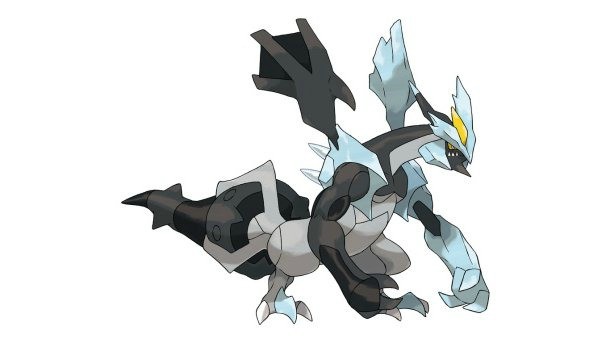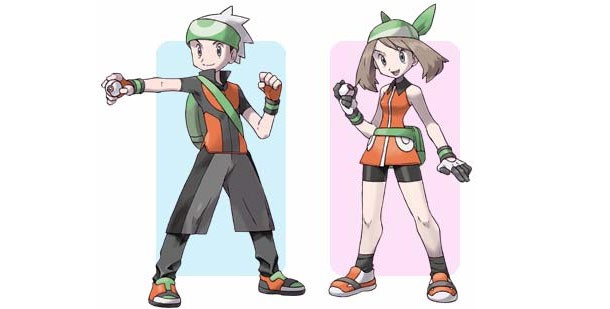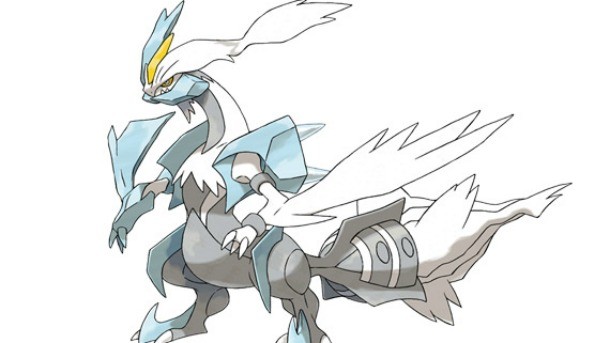The Hidden Depth Of Pokémon

When people think of games that require strategy and a time investment of more than 400 hours of play time, titles like World of Warcraft, Skyrim, and Guild Wars II come to mind. What many gamers don’t realize is that the battle-filled world of Pokémon requires intense hours of training, breeding, stat building, item equipping, and other mechanics to truly master it.
Pokémon’s battle system is often thought to be a simple turned-based formula, and that was true in the days of old. Upon closer inspection, you’ll find that the level of depth and attention to detail is comparable to any major RPG strategy game. With Black & White 2 coming out this Sunday, here is the evolution of a worldwide phenomenon.
The evolution of the battle system
In Red, Blue, and Yellow Pokémon, combat was nothing more than a glorified rock-paper-scissors match where water would always beat fire, electric would always beat flying, and psychic types were next to unstoppable. Stats were amassed into HP, Attack, Defense, Special, and Speed. Even if you had two Pokémon of the same species, the variation in stats would be marginal.
The second generation of Pokémon included Gold, Silver, and Crystal (considered the best entry in the series thus far by many fans), adding core changes and the first real layers of depth to the battle formula. Some of those changes included adding two new types to the series (steel and dark), the ability to allow your Pokémon to hold items, the inclusion of weather effects, happiness factor, official male and female Pokémon, splitting the Special stat into defense and attack, breeding, and the extremely rare virus Pokérus.
Held items did everything from boost certain stats to allowing your Pokémon to survive a life-ending blow. Your Pokémon’s happiness would affect certain evolutions, and the power or weakness of particular moves would change depending on how much they loved or hated their trainer. The splitting of the Special stat meant you had to account for what type of moves your Pokémon should learn to be most effective. The Pokérus disease was a beneficial sickness that doubled the stat bonus points, known as Effort Values, that Pokémon received in battle if they were lucky enough to catch it. The most important change was the ability to breed. You could now raise a Pokémon from the start to your liking or mix parents to give your Pokémon a move they would normally never learn though TMs, devices, or leveling up.
To go along with these new changes, the Battle Tower was added in Crystal as the ultimate challenge to trainers. A 100-floor trail of the best trainers worldwide showed just how tough a battle could be, which has been a reoccurring attractions in the series.
These changes made an impact to the strategies of the game and all led to serious developments to competitive-battling arena, but the series was still far from being a contender until the arrival of the third generation two years later.
Where things got real

Enter the Hoenn region with Ruby, Sapphire, and Emerald the third generation of Pokémon. While the games only added three new battle mechanics, it vastly improved upon every aspect of the battle system while throwing in a lot of new features just for fun.
Every Pokémon in the game from this point on had their own ability and nature to further push the idea that no two Pokémon would ever be the same. Natures offer 25 different personality traits that can be rash, timid, serious, and many more that determines how your Pokémon grows. A Pokémon with an Adamant nature will get a boost to its attack stat when it levels up, but a drop in special attack, whereas a Pokémon with a Naïve nature will receive an increase in speed, but a decrease in special defense upon leveling up.
Abilities on the other hand are attributes which Pokémon have that cause certain battle effects. Usually a Pokémon has at least two different abilities that they can choose from, which often change upon evolution. The power of what abilities can do is massive, from Levitate, which allows renders the user invulnerable to ground attacks, to Swift Swim, which allows the user to double their speed in the rain.
Breeding became a serious staple in getting Pokémon with the right nature, abilities, and moves that could only be learned through breeding. Any hardcore trainer can tell you about the countless hours spent hatching eggs and eagerly talking to the daycare man praying that this egg would finally be the one.
The stat changes to the formula were so intricate and technical that most players were oblivious to them, which is fair considering the game doesn’t keep a written record of them. Individual Values, the stats a Pokémon naturally has from birth or the wild, and Effort Values got completely remolded. EVs became its own special training method that could turn your Pokémon with average speed into a speedster and a defensive tank into an impenetrable wall. For more detailed analysis of EVs and other technical mechanics check out Serebii the fan ran Pokémon site.
The last new thing the third generation threw into the competitive-battling mix was double battles. This added a new layer of strategy to building a team that could play off of each other’s strengths, weakness, and abilities to become successful. Battling had finally become a fluid system where a novice would have no chance of victory against a pro. Combine this with natures, abilities, and EVs, and the possibilities were endless. Pokémon changed from a simple RPG to a strategy-filled masterpiece.
Progression is the key to survival
When the Nintendo DS came out, it was only a matter of time before the next chapter in the series was released to give us another chance to catch ‘em all. More importantly it was another chance to hone our battle skills in Diamond, Pearl, and Platinum.
The fourth generation came out to much enthusiasm with improved graphics and a massive new continent to explore – and not just in the game. For the first time ever, trainers from all over the world could now trade with one another thanks to the Global Terminal depending on your version. Besides adding a plethora of new Pokémon, the fourth generation completely revamped most of the attacks into new categories. Moves that were once physical were now special and vice versa to make more sense of the attacks and their properties.
Other than the challenge from Battle Towers and the Battle Frontiers, there wasn’t much of a human factor outside of friends who were aspiring Pokémon masters and competitive local tournaments until the latest generation.
Present and future

Black and White finally added the very last piece to the puzzle that Pokémon was missing, and for the first time you could battle trainers from all over the world in ranked and free battle matches. For anyone who still thought that Pokémon was a simple game, they would only need to take a trip into a ranked match to discover the level of expertise that the trainers held in their hand.
Black & White 2 is the latest entry, and likely the last, in the fifth generation of Pokémon. Trainers will once again pour hours into the never-ending goal to be the best. The core gameplay may not change much over the years, but the mechanics have steadily evolved.
People always ask what makes Pokémon so special and still relevant in the gaming arena today, but there is no one answer to that question. Whether it’s the charismatic charm of going on a journey, or the competitive nature of battling creatures you raise, Pokémon is a series that deserves respect.

Get the Game Informer Print Edition!
Explore your favorite games in premium print format, delivered to your door.
- 10 issues per year
- Only $4.80 per issue
- Full digital magazine archive access
- Since 1991









